
|
GCOOS is the Gulf of Mexico regional component of the U.S. Integrated Ocean Observing System (IOOS). Our mission is to provide timely, reliable and accurate information on the open and coastal ocean waters of the Gulf of Mexico to ensure a healthy, clean, productive ocean and resilient coastal zone.
|
|
|
|
July 2017 - In This Issue:
|
|
|
|
|
Greetings!

I hope your summer has been productive so far. Things have been gliding along at GCOOS, but I'm already looking forward to next year's Ocean Sciences Meeting in February.
Co-sponsored by the American Geophysical Union (AGU), the Association for the Sciences of Limnology and Oceanography (ASLO) and The Oceanography Society, the Ocean Sciences Meeting will span a broad array of marine science topics. I and my Co-Chair of the IOOC's Glider Task Team, Becky
Baltes from the IOOS Program office
, will be leading a session: "Increasing Success of Underwater Glider Missions" in the topic area "Ocean Observatories, Instrumentation and Sensing Technologies."
Underwater glider technologies and applications are advancing and the ocean observing community is examining means to encourage greater collaboration with decision-makers, glider operators and data users. The session is intended to allow glider operators and data managers to present information on how they are improving overall successes of glider missions within the areas of ocean monitoring, operational reliability, data management and interagency and international coordination.
The call for abstract submissions is open now and runs through Sept. 6, so please be sure to submit your abstract before the deadline if you'd like to share information on your program. Abstract guidelines and the link to submit your proposal is on the Ocean Sciences Meeting website.
I know from my work with glider teams throughout the Gulf that we have many stories about trials, tribulations and successes and I hope many of you will want to share your experiences with your colleagues from other regions.
Until next month!

|
|
|
Nadine Slimak, Public Relations & Content Marketing, Vetted Communications, LLC
|
|
|
|
Hurricanes and Extreme Weather? GCOOS Has Your Back
|
| Looking for the latest news on tropical storms, hurricanes and other extreme weather events in the Gulf of Mexico? GCOOS now has web pages for you!
GCOOS product developers have  created a new page dedicated to tropical weather affecting the Gulf of Mexico -- online at products.gcoos.org/hurricane/ created a new page dedicated to tropical weather affecting the Gulf of Mexico -- online at products.gcoos.org/hurricane/
The page includes:
- Maps with predicted storm tracks, weather forecasts, live web cams along the Gulf coast and more;
- The National Hurricane Center (NHC) weather outlook;
- NOAA satellite loops;
- A Twitter feed with the latest hurricane/tropical weather news from sources like the NHC, National Weather Service (NWS), the Federal Emergency Management Agency (FEMA), the Weather Channel and others;
- Links to Gulf state emergency management centers;
- Links to county evacuation and shelter information;
- Plus videos on storm preparation, what to do during a storm and what to do after a storm.
|
|
|
A second GCOOS page -- products.gcoos.org/weather -- allows you to interactively explore and build custom maps containing past and current predicted storm tracks, current weather forecasts and storm surge inundation scenarios as well as near real-time observations from weather radar, coastal water level stations, offshore weather, ocean currents, sea surface temperatures and much more. Explore the drop-down menus and the menu bars at the top of the page and see additional information by turning new layers on and off to customize your display. Real-time feeds from coastal web cams also show you the current local weather conditions.
|
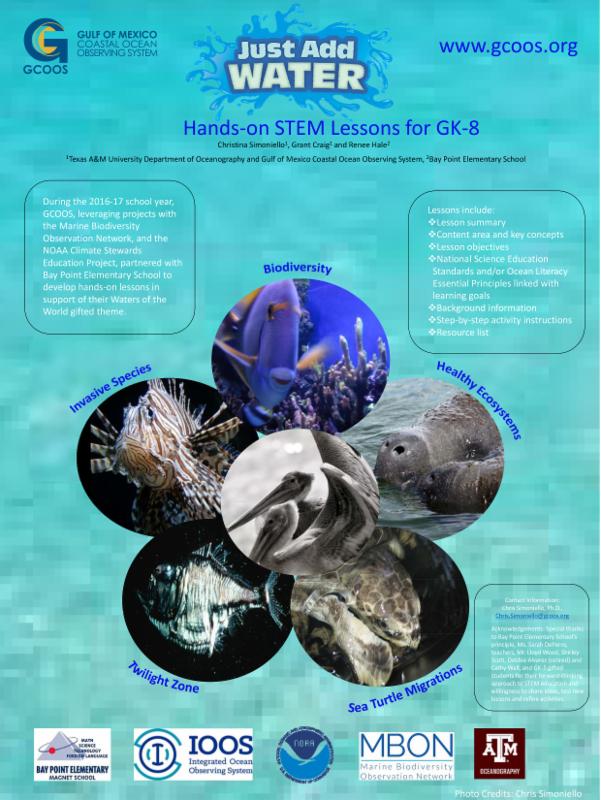
GCOOS staffers Chris Simoniello, Outreach and Education Coordinator, and Grant Craig, Program Coordinator, recently attended the National Marine Educators Association conference in South Carolina. During the meeting, they shared GCOOS lesson plans and activities developed for formal and informal educators to teach students about diverse marine science topics.
The lessons are based on real-life science, including GCOOS-partnered projects like the Marine Biodiversity Observation Network and the NOAA Climate Stewards Education Project. GCOOS worked with Bay Point Elementary School in St. Petersburg, Florida, to develop, test and refine these hands-on lessons, which meet state and national learning standards. Each lesson includes:
- Lesson summary
- Content area and key concepts
- Lesson objectives
- National Science Education and/or Ocean Literacy Standards
- Essential Principles linked with learning goals
- Background information
- Step-by-step activity instructions
- Resource list
The lesson plans developed by GCOOS are free and available on the GCOOS website.
Simoniello and Craig also contributed content for a poster highlighting IOOS outreach and education resources, led by IOOS Association Program Coordinator Abbey Wakely.
|
GCOOS Board Member at U.N. World Oceans Day Event
|
|
GCOOS Board Member Nancy Rabalais, Department of Oceanography and Coastal Sciences Professor and Shell Endowed Chair at Louisiana State University, spoke at the United Nations at an event held in conjunction with World Oceans Day and Week on June 8-9.
The event -- focused on "De-0xygenation in the Ocean" -- was sponsored by the Intergovernmental Oceanographic Commission (IOC) of UNESCO-Ocean Science Section and GO2NE (Global Ocean Oxygen Network). Rabalais spoke on "Coastal Ocean Human-Caused Low Oxygen Areas."
In addition to the excess nitrogen and phosphorus loads leading to coastal eutrophication, including low oxygen zones, harmful algal blooms and coastal ocean acidification, the panel expressed the need for long-term observations that can document changes in the coastal and open ocean. |
New Red Tide Monitoring Instrument Deployed
|
Protections for human health along the Texas Gulf Coast have grown thanks to the deployment of an Imaging Flow Cytobot (IFCB)
at the U.S. Coast Guard Station in Freeport, Texas. The instrument provides early warning of toxic algae in the Gulf of Mexico that can make
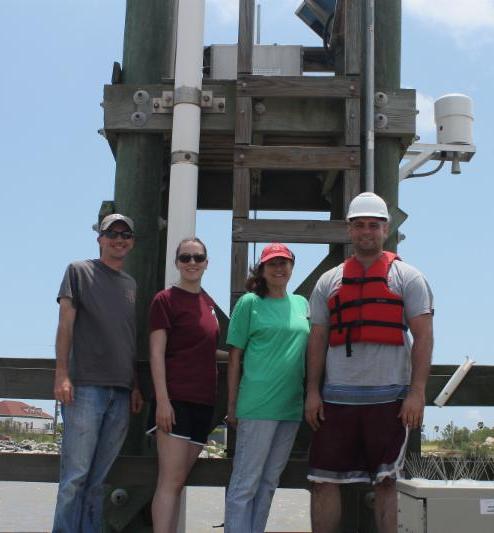 humans sick, such as
Karenia brevis and
Dinophysis ovum. Toxins from these species accumulate in shellfish that -- if ingested by humans -- can cause Neurotoxic Shellfish Poisoning (
Karenia) or Diarrhetic Shellfish Poisoning (
Dinophysis), resulting in severe gastrointestinal distress and even neurological symptoms.
The IFCB is a tool developed by scientists at Woods Hole Oceanographic Institution that combines a flow cytometer with video imaging and pattern recognition software to automate detection of algae species. Dr.
Lisa Campbell, William R. Bryant Chair in Oceanography at Texas A&M University, has deployed the IFCB in Texas to provide a vital early warning system that keeps people healthy.
This IFCB, funded by the National Centers for Coastal Ocean Science, is the second deployed in Texas waters. The first,
located at Port Aransas, is supported by GCOOS. Data from the IFCBs are hosted on the GCOOS website and streamed to other organizations.
The Texas Parks and Wildlife Department and the Texas Department of State Health Services use alerts from the IFCB to ensure harvested shellfish are safe to eat, beach experiences are enjoyable and to investigate marine wildlife die-offs. NOAA also includes IFCB data in HAB Bulletins for Texas.
|
Gulf Dead Zone: One of the Biggest Ever?
|
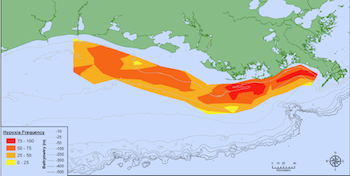 Predictions have been released for the dead zone that forms annually in bottom waters of the northern Gulf of Mexico continental shelf. Predictions have been released for the dead zone that forms annually in bottom waters of the northern Gulf of Mexico continental shelf.
The low oxygen conditions are created when nutrients from the Mississippi River watershed fertilize the Gulf's surface waters to create excessive amounts of algal biomass. As these algae decompose, they deplete oxygen in the bottom layer, leading to stress and even death in organisms like fish, shrimp and crabs in some of the Gulf's richest waters. In turn, human livelihoods and other species that depend on these resources suffer the effects. The estimates could change, depending on extreme weather activity -- tropical storms and hurricanes -- in the Gulf.
The Hypoxia Forecast released by Dr. Nancy Rabalais and Dr. R. Eugene Turner at LSU's College of the Coast and the Environment and the Louisiana Universities Marine Consortium predicts a dead zone 93 percent larger than average -- an area about the size of Vermont. If the size of the hypoxic zone reaches predictions, it will be about five times larger than the goal set in the Hypoxia Action Plan, which was developed as a guide to reducing nitrate loading levels.
The
10,089-square-mile prediction differs slightly from other predictions made by a team of researchers from the University of Michigan and North Carolina State University and the official estimate from the National Oceanic and Atmospheric Administration and the U.S. Geological Survey, which blends the modeling results from science teams at numerous labs. The U of M and NC State forecast predicts a dead zone 7,722 square miles and the NOAA/USGS forecast predicts a dead zone of
8,185 square miles.
|
The Gulf of Mexico Alliance is holding a photo contest seeking images to help populate its website, newsletters and other materials. Photos should relate to any of GOMA's six themes: 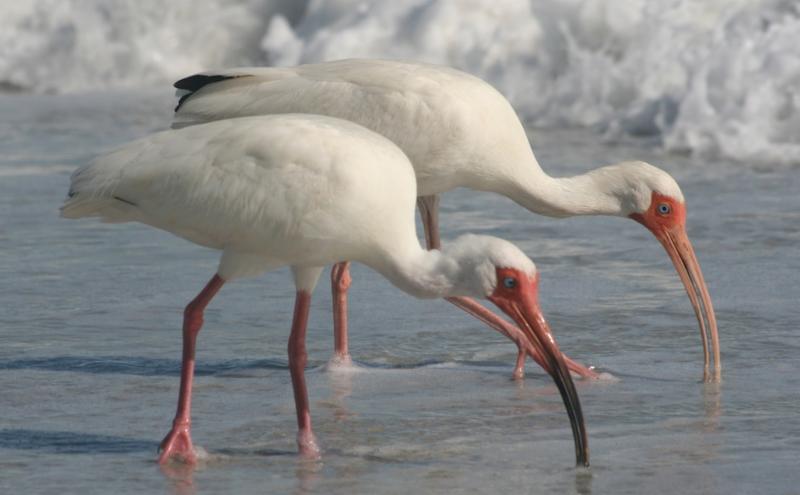
- Coastal resilience
- Data & monitoring
- Education & engagement
- Habitat resources
- Water resources
- Wildlife & fisheries
The images must relate to the Gulf of Mexico and/or its watersheds within the five U.S. Gulf States.
|
GOMA's 2017 Gulf Star Program Request for Proposals (RFP) is now open. 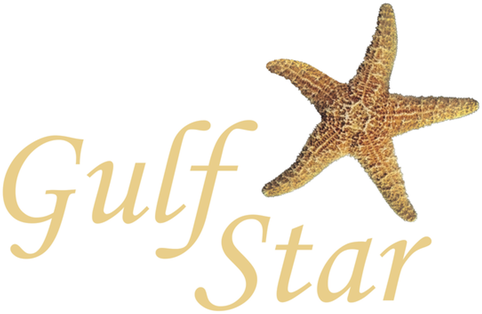 Applications will be accepted through Sept. 1, 2017. Teams and cross-team initiatives addressed in this request include: Coastal Resilience, Data and Monitoring, Ecosystem Services, Education and Engagement, Water Resources, and Wildlife and Fisheries. Applications will be accepted through Sept. 1, 2017. Teams and cross-team initiatives addressed in this request include: Coastal Resilience, Data and Monitoring, Ecosystem Services, Education and Engagement, Water Resources, and Wildlife and Fisheries.
Earlier this year, Gulf Star welcomed Anadarko to the funding partnership. The program launched in 2016 and awarded nearly $670,000 to 19 recipients around the Gulf of Mexico region.
|
|
U.S. IOOS Advisory Committee Seeks New Members
|
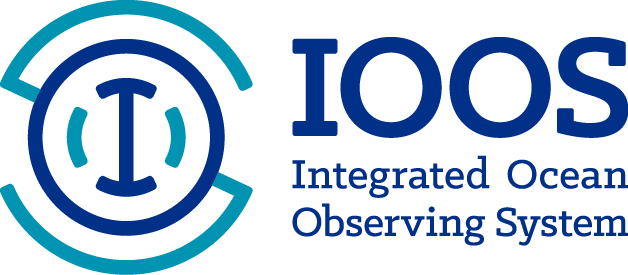
The U.S. IOOS Advisory Committee is soliciting applications for new members for the August 2018 term. The Committee provides advice to the Under Secretary of Commerce for Oceans and Atmosphere and to the Interagency Ocean Observation Committee (IOOC) on the planning, integrated design, operation, maintenance, enhancement and expansion of the United States Integrated Ocean Observing System (U.S. IOOS).
Applications will be accepted through Sept. 20, 2017. (Applications received after the deadline may be considered for future cycles.)
Potential members shall be qualified by education, training and experience to evaluate scientific and technical information related to the design, operation, maintenance or use of the IOOS or use of data products provided through it. The Committee is seeking individuals with expertise in oceanographic data, products and services; coastal management; fisheries management; coastal and marine spatial planning; geodesy; water levels and other science-related fields.
|
|
The Mississippi Trustee Implementation Group (MS TIG) has released its 2016-2017 Restoration Plan/Environmental Assessment, with three NRDA projects for implementation: Graveline Bay Land Acquisition and Management ($11.5 M), Grand Bay Land Acquisition and Habitat Management ($6.0 M) and Upper Pascagoula River Water Quality EnhancementProject ($4.0 M). Restoration Types include wetlands, coastal and nearshore habitats, birds and nutrient reduction.
|
|
GRP and NAKFI award $1.55M in Interdisciplinary Seed Grants
|
| The Gulf Research Program and the National Academies Keck Futures Initiative (NAKFI) are pleased to announce the recipients of 21 interdisciplinary seed grants, totaling $1.55 million. These competitive grants support bold new ideas, including cross-disciplinary collaboration and research, stimulated by last November's annual NAKFI conference on Discovering the Deep Blue Sea: Research, Innovation, Social Engagement.
|
|
Oil Spill Rapid Response Workshop
|
|
Registration is now open for the Aug. 2-3 Gulf Research Program's oil spill rapid response workshop in Washington, D.C.
As part of its work to support healthy and resilient communities and minimize harm from oil spills, the Gulf Research Program is collaborating with the National Academies' Health and Medicine Division to convene the public workshop. Because the workshop agenda is designed to be interactive, they encourage participants to attend in person if possible. For those who are unable to join the workshop in person, a remote webcast option will be offered.
- Explore key research needs and other opportunities (e.g., collecting environmental, social and health data) to improve public health response and protection during and after oil spills (including physical, mental and social aspects of health and well-being).
- Inform GRP discussions about how a rapid response workshop or other activities could meet important needs during major marine oil spills.
- Register now
|
Restoration Funding Calendar
- NOAA RESTORE Act Science Program hosts a three-year calendar that consolidates planned funding opportunities
By State:
|
EPA RESTORE Northwest Florida Estuary Program RFP
|
|
This notice announces the availability of funds and solicits proposals to develop and stand-up a place-based estuary program encompassing one or more of the following bays in Florida's northwest panhandle region: Perdido Bay, Pensacola Bay, Escambia Bay, Choctawhatchee Bay, St. Andrews Bay and Apalachicola Bay. The deadline is Aug. 1, 2017.
|
EPA Gulf of Mexico Program 2017 Gulf of Mexico Program Request for Proposals
|
|
This notice announces the availability of funds and solicits proposals that address water quality improvement; coastal habitat and ecosystems enhancement, restoration and/or protection; environmental education and outreach; and community resilience in the Gulf of Mexico region and its watersheds. The deadline is Aug. 4, 2017.
|
Office on National Marine Sanctuaries seeks Deputy Director
|
| NOAA's Office of National Marine Sanctuaries (ONMS) is seeking Deputy Director. ONMS is one of NOAA's signature place-based ocean conservation programs managing more than 600,000 square miles of treasured ocean places. Based in Silver Spring, Maryland, the Deputy Director will help direct the day-to-day operations.
|
IT Business Analyst; Domain Land Administration
|
InnoLA Solutions, Inc., is looking for an IT professional to provide business analysis professional services. Based at the client site, the business analyst will work between the client/customer project team members and our IT development team finalizing requirements, as well as supporting the client during product review and testing. The business analyst will become intimately familiar with the InnoLA software in order to review implemented functional requirements. Although this position will report to a Senior Business Analyst, the selected business analyst must be able to work independently, with a mix of local and remote teams, and be ready to learn land administration domain specifics.
InnoLA is a US based company focused on the design and development of software for land administration (e.g., registration of titles, deeds registration, land rights management), and the provision of IT professional services to analyze and deploy the customized solution. Our multi-year projects are located primarily in developing countries where the governmental organizations are moving from manual, paper-based environments to automated digital solutions.
This position is a contract job with all living expenses (lodging, per diem, airfare, etc.) covered during the on-site stay. Please contact Carol.roffer@innola-solutions.com or call (321) 806-8941.
|
Research Specialist; Algal Resources Collection, University of North Carolina Willmington
|
The MARBIONC's Algal Resources Collection (ARC) has an immediate opening for a Research Specialist. The ARC specializes in the growth and maintenance of marine diatoms, flagellates and dinoflagellates that have been shown to be harmful in some way to aquatic life or human health. The ARC mission is to provide superior, unique biological material from harmful algal species and provide services for the enhancement and development of the scientific research community. The collection houses more than 800 living clones from more than 70 species from around the globe, which are available to the research community for purchase.The applicant will act as both Lab Manager and Curator responsible for all aspects related to the day-to-day management of the ARC.
|
Gulf Research Program seeks Communication/Media Specialist
|
The National Academies of Science, Engineering and Medicine's Gulf Research Program has an opening for a Communications/Media Specialist to assist in expanding understanding and awareness of the Gulf Research Program's activities and accomplishments.
|
The World Meteorological Organization seeks an Associate Technical Coordinator for the Data Buoy Cooperation Panel
|
The World Meteorological Organization is hiring an Associate Technical Coordinator for the Data Buoy Cooperation Panel (DBCP) and OceanSITES, as a part of the JCOMM Observations Programme Support Centre (JCOMMOPS). You will join a dynamic technical coordination group supporting the operators of basin-scale in situ sustained ocean observing networks, monitoring status and data flow, and developing tools that report to larger observing systems: the WMO Integrated Global Observing System (WIGOS) and the Global Ocean Observing System (GOOS).
|
Physical Scientist; National Weather Service Office of Organizational Excellence
|
The NWS Office of Organizational Excellence (OOE) is hiring a GS-13 physical scientist to work on organizational change and culture, strategy and stakeholder engagement.
|
NRDC seeks a Climate Change and Health Science Fellow
|
NRDC is seeking a two-year, full-time Climate Change and Health Science Fellow with extensive interdisciplinary training and expertise in the areas of environmental and public health and climate change. The Fellow will work with NRDC's Science Center, which supports and advances the use and application of science in all of NRDC's programmatic areas.
|
September
International Radiowave Oceanography Worshop, September 19-21, 2017 in Luneburg, Germany. The successful series of the international Radiowave Oceanography Workshop (ROW) has focused on the scientific aspects of ocean applications of high frequency radars. ROW 2017 is the next in this series and will provide a forum for researchers to discuss their results, swap data and algorithms, and identify priorities for future research.
If you would like to participate please refer to the registration section. See the Important dates.
October
GCOOS BOD/Members Meeting, Oct. 11-13, 2017, Mobile, AL.
IOOS Advisory Committee Meeting, Oct. 24-26, 2017.
Hydric Soils Identification Course Oct. 19-20
LSU's College of the Coast & Environment's Department of Oceanography and Coastal Sciences will host a two-day workshop addressing the field identification and delineation of hydric soils. Workshop attendees will gain the skills required to identify hydric soils in the field and conduct hydric soils delineations within Louisiana and across the Gulf Coast Region. Additionally, the workshop will be applicable to those working throughout the Atlantic region and other areas of the country. Registration is limited.
- Accommodations at the Staybridge Suites, 4001 Nicholson Dr., Baton Rouge, LA 70808 (225.456.5431), must be booked by Sept. 18, 2017, for the group rate. If calling, please refer to the Hydric Soil Identification Course for group rate. Group Code: HSC
- Registration
Gulf of Mexico Oil Spill and Ecosystem Sciences, February 5-9, 2018, New Orleans, LA. Don't forget, the conference is still accepting abstracts that promote fundamental Gulf ecosystem science or link scientific results to ecosystem resilience, oil spill response, or restoration and management. The deadline to submit an abstract is September 11, 2017.
|
|
Share Your News with GCOOS
|
Do you have a meeting, job or funding announcement? Please let us know so we can help spread the word. Email info, including all pertinent details and website links, to Laura Caldwell, GCOOS Staff Assistant, lcaldwell@gcoos.org.
Are you starting or finishing a research project, reporting new findings, have a new publication or other big news to share with the GCOOS community? Please email our Public Relations and Content Coordinator, Nadine Slimak at Vetted Communications, nadine@vettedcommunications.com.
|
|
|
|
|